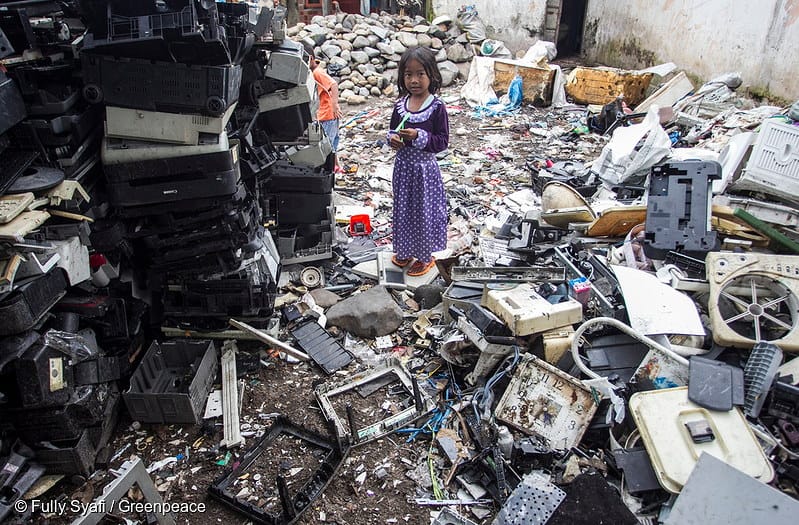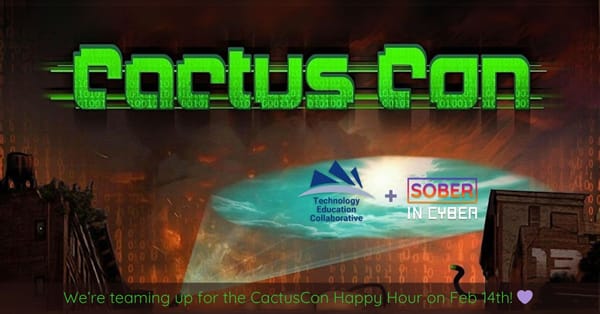An Abundance Of Scarcity
How adding scarcity to digital and other post-scarcity environments creates problems and suffering.

On a planet with finite resources, scarcity is unavoidable. There’s only so much water, food, land and energy. Inevitably, all species compete with each other for these limited resources.
When one species uses up all resources available in a given area, this usually leads to a die-off. Sometimes only the species that consumed the resources dies. Other times the impact spreads to other species, such as when locusts or rats have a massive population boom that leads to famine.
As humans have populated nearly every corner of the planet, our impact is truly global. Our actions impact not just humans, but every species on Earth.
Abundance via Technology
One advantage humans have over other animals, however, is the scientific method. Scientific discovery frequently becomes applied technology that gives humanity extraordinary new capabilities. We can count among these the ability to use resources more efficiently. We can convert one resource into another, like making food from things that would normally be inedible. We burn fuel to create energy and even transform matter directly into energy or transmute one element to another with nuclear technology.
The ability to use technology to reduce the impact of scarcity is one of humanity’s greatest achievements. No other species has pulled this off.
Digital Abundance
With the invention of digital technologies, we humans have completely escaped the bounds of reality and moved beyond scarcity into a fundamentally abundance-based regime.
Modern computers work by constant copying of bits, the fundamental unit of information. Bits move from hard drives or solid state drives into main memory, from there into various levels of cache, and then into processor registers. Then the bits make the reverse trip, sometimes leaving the computer and being transferred to the internet. The internet works by splitting information into packets of information and sending them from router to router, on each hop the information packets are copied several times as routers are computers dedicated to moving internet traffic. Finally, packets are reassembled and the information is copied into main storage at its destination.
The above is a vastly oversimplified explanation that leaves out even more copying that takes place, such as from the main processor to the memory on the graphics card so information can be displayed on the screen. For example, a traceroute from an average consumer computer to techedcollab.org may result in about 20 hops, each hop involving at least three copies of the bits that make up that message on each router. The key point is that computers copy data constantly. This copying is so frequent, literally millions to billions of times per second, that the cost is essentially zero.
This means digital computers are fundamentally an abundance-based or post-scarcity system. It’s the one area of our existence where we’ve managed to not just increase our effective resources with technology but to make knowledge resources exist outside the limits of scarcity.
Digital Scarcity
Unfortunately, because we’ve become so used to scarcity we can’t even imagine a world without it. Our progress toward a post-scarcity world has remained theoretical. Rather than computers pulling the rest of society forward, society has pulled computing backward.
Humans regulate and navigate scarcity partly through economic systems. After all, if anyone could have as much as they wanted of any resource there would be no need for economies or money.
So we’ve created massive, complex systems of rules to manage distributed resources. We’ve become so obsessed with these systems that we now gladly waste or destroy real resources to improve the imaginary numbers of our economic systems such as when crops are destroyed to stabilize prices.
Thus modern economies are based on the idea of constant and infinite growth, a patently absurd concept in a finite world. So, we have had to become ever more imaginative about maintaining the illusion of constant and infinite growth within these systems.
The digital world is the latest realm to be infected by scarcity-based economic thinking. Indeed, this seems to answer the question: What if we could create artificial scarcity where it shouldn’t even exist?
Digital Rights Management (DRM)
Since computers work by copying bits, and all bits are exactly alike, making a limited number of digital “objects” is actually rather hard to do. The first attempts were “copy protection” on video games and “digital rights management” for music and video.
None of these schemes ever really work because in order for users to watch or listen to digital media, at some point that media has to be decrypted (unscrambled) and shown to the user. They always have the option of recording it again on the same computer or even another device during its display.
The harms perpetrated on society by attempts to foist this unworkable scheme on the public have been significant. The most severe, from a legal standpoint, is the passage of the Digital Millennium Copyright Act or DMCA. This law dramatically increased the penalties for copying digital media and also included an anti-circumvention clause which has proven extremely toxic.
The anti-circumvention clause provides severe penalties for anyone circumventing the DRM on anything with software. When the law was first drafted, this primarily meant desktop computers. Today, however, just about everything – including thermostats and toothbrushes – uses software.
Modern tractors are highly sophisticated and contain a considerable amount of software, thus repairs that were cheap and easy for farmers to do themselves in the past have now become costly and time consuming.
DRM squarely attacks and undermines the very concept of ownership itself. This is why the Right to Repair movement is critically important.
Domain squatting
The Domain Name System is another area where scarcity has been falsely created.
While DNS seemed like a good way to find hosts on the early internet, it turns out that AOL was right and people just want keywords. Watching most users browse the web makes this abundantly clear as they type everything –including domain names– into their favorite search engines.
With such global registries, only one person or entity can own a given identifier like techedcollab.com. In fact, all of the three-letter .com domains had been registered by mid-April 2000.
If you’re wondering why so many companies have internet addresses that are misspelled or use made up words, it’s because there is an entire industry dedicated to domain parking, or registering domains that might be desired for the small initial registration fees so that they can be sold at far higher prices to companies that might actually put up a website there.
The problem with allowing a single entity to own a word or domain is that it undermines the utility of using these things for discovery. Requiring payment to own identifiers makes for some perverse incentives and in some cases can lead to direct harm.
Cryptocurrencies
Artificial scarcity is precisely the point of cryptocurrencies like Bitcoin and Ethereum. They are systems for recording “ownership” of digital things.
The current favorite approach is to use a system called “proof of work” which trades real resources in the form of computers and electricity for numbers with “special” patterns. It’s amazing that we’ve convinced so many people to go along with this. Try convincing a five-year-old that, instead of making more ice cream for everyone, we should use most of the ice cream to create a system to keep track of who is allowed to eat ice cream. I’ll bet that proposal would get a reception colder than the ice cream itself. Apparently, adults have more vivid imaginations.
This is the current state of affairs. Bitcoin alone uses more electricity and pumps more carbon into the atmosphere than many entire countries, all so we can keep track of who “owns” some really, really big numbers (Bitcoins). These numbers can in turn be traded for other imaginary things like fiat currencies, which in turn can be traded for actual resources. Proponents will tell you Bitcoin can be used to buy things directly, but this is mostly theoretical as in reality Bitcoin struggles to handle even five transactions per second. (We’ll defer the details of why this is and why “fixing” it is a lot harder than it should be to a later article if there is interest.)
Bitcoin has achieved something that should be inconceivable – it’s made our economy more complex, and astonishingly, more wasteful per transaction. If more people use Bitcoin, it might soon require as much electricity as all of the datacenters that keep modern computing and the internet running.
Even more insulting, as soon as we stop wasting all of this energy, Bitcoin ceases to exist. While calling the process “mining” is a good analogy due to an extreme environmental toll, it’s not a perfect comparison. Once you mine gold or silver, it stays where it’s put and remains accessible. Other than guarding it, there is no ongoing energy expenditure needed to keep it in existence.
Non Fungible Tokens (NFTs)
If the above wasn’t absurd enough, another “innovation” in the form of Non-Fungible Tokens has emerged. It’s helpful to think of these not as money, but as POGs, though not little decorated discs of cardboard, but imaginary cardboard discs that you can never hold.
NFTs can supposedly grant ownership of digital goods. Though, unlike a legal contract, trademark, or copyright, they have absolutely no legal force. So as long as being able to say that you own a particular thing, without actually having any legal rights of ownership is your thing, maybe it’s worth paying millions. Or maybe you have other motives for such a purchase.
Further, because many of the goods that are being “transferred” by NFTs are digital, and many have existed before this absurd craze, such as the first tweet on Twitter, there are already numerous copies in existence. But apparently, you can say you “own” that thing now. It’s basically the same idea as buying land on the moon. You can say you own it, without any of the actual benefits of ownership.
Real and Moral Costs
All of this absurdity would be hilarious in a “haha, wait should we check if he’s ok?” kind of way except that it causes real harm.
Resource waste
Digital scarcity causes information to be needlessly re-transmitted, or in the case of blockchains, excessively transmitted to implement make them “trustless”.
Cryptocurrency mining involves doing insane amounts of useless math. This computation could be used to create new drugs to cure cancer, look for new vaccines to prevent the next pandemic, or train machine learning models to enable automatic language translation, robotics, factory and farm automation, and much more. There is one side benefit to Bitcoin mining, the only thing it enables is Bitcoin itself.
This mining is so wasteful that it has threatened power grids in some areas and lead to outages in others. All so we can allow individuals to “own” virtual coins.
Environmental damage
Most electricity is still sourced from non-renewable, carbon-positive sources. This means that for every inefficiency introduced, there is a corresponding environmental cost. In the case of DRM, the energy wasted re-downloading a movie to watch it again (since keeping a copy might not allow media companies to keep control of the data) wastes energy and makes the viewing experience worse for the customer as they have to deal with the dreaded buffering every time they watch it.
With Bitcoin and other blockchain solutions, the environmental costs are truly insane. Even though the blockchain is seldom used to transmit any data other than data about the ownership of various “coins,” its very operation is unfathomably wasteful due to both proof of work and the desire to maintain many extra copies of the chain to keep the system “trust-less.”
Although prior distributed systems that use “sharding” share the load of the data between many nodes and duplicate some data to ensure reliable operation in the case of node outages, the amount is closer to 5-10% overhead per node. With blockchains, each “full node” must spend the energy and storage space to maintain a copy of the entire chain. This means that each node must process and store 100% of the blockchain. The only way to scale blockchains is to constantly replace nodes with larger and more power hungry computers.
Further, they must constantly broadcast new blocks to other nodes leading to excessive network traffic. This design is astoundingly wasteful and would have been rejected outright by distributed systems engineers mere decades ago because of its inefficiency.
Crime
The inefficiencies mentioned above, in addition to several other issues, have made the goal of turning blockchain into practically usable currency elusive. That’s why Bitcoin is now referred to as a “store of value” even though it has no intrinsic value.
The one area in which blockchain has indeed led to rapid innovation is ransomware. Before blockchain, it was infeasible to remotely ransom someone’s computer. The technology to remotely encrypt the victim’s files has been available for decades. The problem of extracting payment from the victim in a way that banks or law enforcement couldn’t stop and was also difficult to trace. Bitcoin has given criminals a viable system to collect remote ransom and extortion payments.
Scams
Further, since Bitcoin is still mostly unregulated, lots of old scams that had been regulated out of the stock market are back and thriving in the land of cryptocurrencies. Pump and Dumps, front-running, and numerous other old scams have been resurrected. Since Bitcoin is the same as cash, once someone is parted from their money, there is no real way for that person to be made right in the case of fraud. An absolute dream come true for those running scams.
Keeping people stuck in a scarcity mindset
By far the worst harm that blockchain and other mechanisms of digital scarcity perpetrate on humanity is keeping society stuck in a scarcity mindset. We should be collectively benefiting from the abundance of knowledge and information, living in a golden age of education, research, creativity and innovation. Instead, we’re still playing a moronic zero-sum game of who can collect the most imaginary tokens and “win” the game at the expense of everyone else.
In reality, even the winners are losers as we all miss out on the innovations that won’t exist because someone was barred from the knowledge needed to further their research, or outright denied from distributing the fruits of their creative endeavors for free because it threatens to make abundant what someone else wishes to remain scarce for their sole benefit.
This would be merely tragic were it not for the fact that we now face global scale challenges due to the population, the new sociological and geopolitical dynamics brought about by social media, the undermining of truth by increasingly sophisticated deep fakes, and most pressingly, drastically intensifying and accelerating environmental changes.
These challenges will take nothing short of massive, global-scale cooperation to overcome.
That cooperation remains impossible as long as Bitcoin and other blockchains keep societies thinking in an adversarial, individually competitive, zero-sum mindset that renders humanity incapable of creating a decent tea kettle.
Humanity at this stage still has a choice to make. We can finally fully benefit from digital abundance and make a transition to the potential of an abundance-based society. Or we can continue with our broken systems and experience equally historic global systemic failure.


